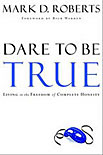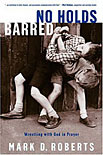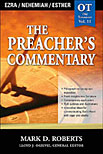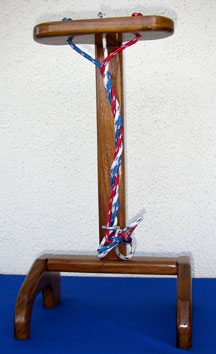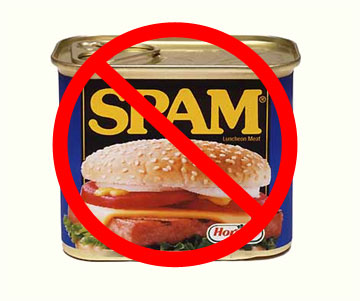| |
A Resource by Mark D. Roberts |
|
Archive for July through September 2006
Note: This archive contains all of my posts for this month that are not included in some other series. I really don't have the time to save things in more than one place. If you're looking for a specific item, use the "Search" button in the upper left hand corner. Thanks. |
by Rev. Dr. Mark D. Roberts
Copyright © 2006 by Mark D. Roberts
Note: You may download this resource at no cost, for personal use or for use in a Christian ministry, as long as you are not publishing it for sale. All I ask is that you give credit where credit is due. For all other uses, please contact me at mark@markdroberts.com. Thank you.
Tying the Knot 
Posted for Sunday, July 9, 2006
I performed a wedding today for a young woman from my church and her new husband. In the wedding they literally tied the knot, taking a couple of minutes to weave together three strands of rope, and then tie the strands together with several knots. The three piece of rope were meant to represent the joining of their two lives together, with the third piece standing for Christ's presence in their marriage. All of this was connected to the text of Ecclesiastes 4:12, which reads, "A threefold cord is not quickly broken." Now this couple has a memento of their wedding, something that reminds them, not only of the wedding itself, but also of the centrality of Christ in their married life.
As I was preparing to do the wedding homily, I began to wonder where the expression "tie the knot" comes from. So I googled on "tie the knot," and came up with 1,180,000 hits. After poking around a bit I discovered that there are a several theories about the origin of "tie the knot" as a way of talking about getting married.
One suggestion is that "tie the knot" derives from the time when married couples would need a new bed. Before mattress and box spring sets, beds were made from wooden frames with ropes strung across the frames, upon which were placed straw mattresses. Newlywed couples thus had to "tie the knot" of their marriage bed. |
|
| |
This is what the couple produced in the wedding today. |
Another suggestion points to the ancient Celtic wedding ritual in which the hands of the bride and groom were ceremonially tied together to signify their marriage bonds. In some quarters this was called "handfasting" (i.e. fastening hands together with rope).
Apparently handfasting is still used today in pagan weddings, which are even called "handfastings." Traditionally, the handfasting signified a commitment of one year and one day, after which the handfasted couple would decide whether to renew their commitment for another year. In some cases the handfasting year was a trial run, after which the couple would be considered married for a lifetime. Of course this is quite different from the Christian notion of marriage being "till death do us part."
As I reflected on the knot tying dimension of marriage, I remember a passage in the New Testament from Paul's letter to the Colossians:
As God’s chosen ones, holy and beloved, clothe yourselves with compassion, kindness, humility, meekness, and patience. Bear with one another and, if anyone has a complaint against another, forgive each other; just as the Lord has forgiven you, so you also must forgive. Above all, clothe yourselves with love, which binds everything together in perfect harmony. (Colossians 3:12-14)
In the original Greek, the last sentence reads, quite literally: "Above all, clothe yourselves with love, which is the binding together of perfection." We would tend to say that love is that which perfectly binds together the Christian life. Or, more simply, love is the perfect knot.
It's always dangerous to use the word "love," because it is so often cheapened in our society. The love that ties together the Christian life, the love that binds husband and wife together in lifelong marriage, is not the romantic love celebrated in pop culture. It's not a matter of feelings and whims. Rather, the perfect knot kind of love is self-giving commitment to another person. It's the love of God in Christ, the One who gave up His own life for our sake.
The phrase "tie the knot" may have a pagan origin. But it also works as we think about marriage from a Christian perspective. From a Christian point of view, a wedding is indeed a knot-tying ceremony. But neither the bride, nor the groom, nor the pastor tie the most important knot. It is God who binds a man and a woman together, making the two into one. Moreover, it is the love of God, "the binding together of perfect," or "the perfect knot," that will keep them together as they face the difficult challenges of marriage.
Choking on Spam
Posted for Monday, September 4, 2006
When I was growing up, every now and then my mother would fix Spam for dinner. Maybe she knew that if she served Spam every now and then we'd be more grateful for our usal fare of natural meat products. Or maybe it was her secret plot to turn me and my siblings into vegetarians.
Now that I have more control over what I eat, I don't eat Spam. But that's not to imply that my lfie is spam-free. Hardly! I deal with spam every day, Internet spam, that is. spam, as you probably know, is that unwanted, pesky, demonic stuff that fills your e-mail in-box. If you're getting more spam than you can believe, don't worry. You're not alone. A recent study found that 70% of all e-mail is spam. Yikes!
This study also found what the content of spam seems to be changing. Fewer emails are advertising porn sites, while more are trying to sell medication of one form or another. 36% of spam wants you to but medicine. 19% wants to get your personal financial information so somebody out there and rip you off ("phishing" schemes). Oddly enough, it seems like many of the somebodies out there are in Russia, or are using Russian Internet services, at any rate. If you track the sources of the spam in your in box, you'll be surprised how much comes with a .ru suffix. |
|
|
I've often wondered what's the point. Surely, I reasoned, people aren't responding favorably to spam offers. But a story in Wired News set me straight. It seems that, three years ago, a security flaw in a website allowed outsiders to discover how effect spam campaigns actually were. A product that promised to enhance male sexuality attracted 6,000 positive responses in a four-week period, with average orders around $100. You do the math. That's $600,000. So you can see why hucksters of dubious morality are filling your in-box. There are still plenty of suckers out there who are rewarding the spammers.
For me, one of the most frustrating kinds of spam fills, not my email inbox, but my website bulletinboard. When I first starting using a simple bulletin board program, before long I was getting all measure of junk in there: porn links, phony sales offers, and so forth. Then I upgraded by bulletinboard to a more sophisticated program. For a while I seemed to be protected. But, after a while, the spam started to invade. In recent weeks I've been getting a dozen or more new "members" of my bulletinboard. But most of these have no interest in the content of my blog. They are simply trying to promote their goodies, mainly pharmaceutical products, online poker, and pornography.
So, in an effort to get away from spam once again, I'm changing my website bulletinboard once again. Those who want to comment on my blog will need to go through a short screening process engineered by Typepad, the host of my new bulletinboard. Once somebody has a Typepad ID, it will be easy for that person to engage in online conversation. Others can read along without registering. And spammers -- I hope -- will have harder time trying to invade the sanctity of my bulletinboard.
Actually, this change offers a number of pluses apart from spam security. It will make conversation about my writing much easier, I think, more user friendly, if you will. (In case you're wondering why I don't have the "Comments" capability of most blogs, you should know that I don't use an automated blogging service. This gives me lots of freedom, but makes certain features, like commenting, rather difficult.)
A Little More About Spam
Why, I wonder, do we call unwanted, junk e-mails and the like "spam"? The consensus of opinion is that the name is based, not on the luncheon meat, but on the song that was a part of a skit on Monty Python's Flying Circus. This song included a bunch of Vikings singing: "Spam, spam, spam, spam, spam, spam, spam, spam, lovely spam! Wonderful spam!" To hear a bit of this marvelous number, click here (.mov, 96 K). The point would seem to be that spam is a bothersome invasion into one's consciousness that keeps on going without end. That would describe Internet spam pretty accurately, I think.
Of course Spam is also and originally a luncheon meat. I remember eating Spam when I was a boy. It was usually fried, and often served with eggs (in place of bacon or ham). Sometimes we'd have Spam as the main course for dinner. My mother liked Spam, I think, because it reminded her of her childhood. It was a common food during World War II.
What is Spam, really, you wonder? Well, there is a nifty Spam website with a FAQ page that will answer this question, and almost anything else you might wonder about Spam (if you wonder about Spam at all). Spam is a combination of pork shoulder and ham, along with "secret spices." The name "Spam" was thought up by Kenneth Daigneau, who won $100 in a Hormel "name this wonderful luncheon meat" contest.
Spam, by the way, debuted in 1937. Since that time Hormel has sold over 5 billion cans of Spam. Just think about it. That's just a little less than one can of Spam for every human being on earth.
If you'd like to learn more about Spam, you can always visit the Spam Museum. It's in Austin, Minnesota, near the Iowa state line. More fun, perhaps, would be an experience with the Spammobile. I wonder if you can rent one of these for a summer RV trek? |
|
|
Above: an actual ad for Spam from the 1940s. Makes you hungry, right?
Below: the Spammobile
Below that: a Las Vegas slot machine |
|
|
Last time I visited Las Vegas, I was wandering through the casino of my hotel. Lo and behold, I spotted a slot machine that surprised me. I didn't play that slot, since I'm not inclined to gamble. But I must say I did wonder. If you hit the jackpot on this machine, what would you win? Money? Or Spam? Cans of Spam! "Spam, spam, spam, spam, spam, spam, spam, spam, lovely spam! Wonderful spam!"
May you have a restful and spam-free Labor Day!
|



